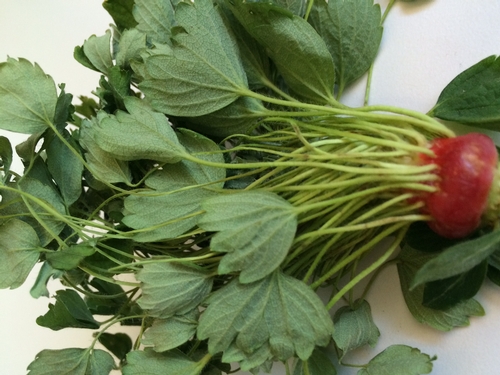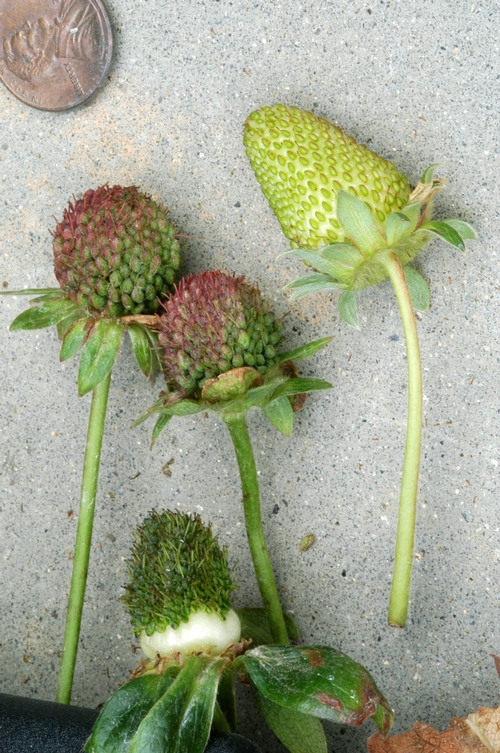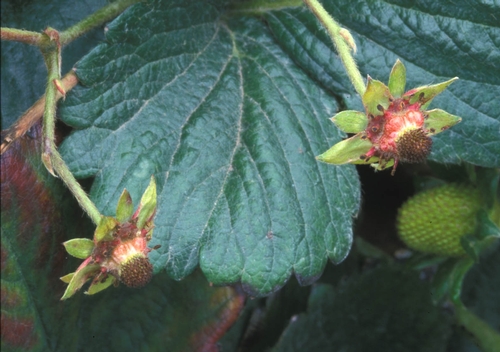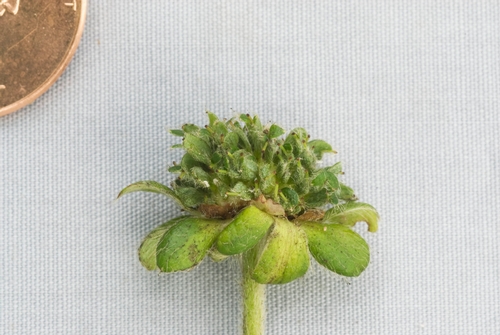Growers, field managers, PCAs, and other personnel overseeing strawberry on California's Central Coast occasionally encounter strange and bizarre deformities of strawberry fruit and flowers. Such a condition is called “phyllody” and occurs when leaves or leaf-like structures replace the flower and flower parts of strawberry. This condition can also result in the flower parts turning green. Phyllody can occur in two different ways.
1. Non-infectious phyllody: The type of phyllody currently developing in spring 2015 is apparently the non-infectious type. Non-infectious phyllody seems to be associated with an excess of supplemental chilling of the transplants while in storage. Our experience in the field is that these symptoms, alarming as they are, will go away after showing up in a spring flush of fruit. Therefore the condition is not persistent. Figure 1 shows a spectacular example of this disorder.
2. Infectious phyllody: This category of phyllody occurs due to infection by a phytoplasma. Phytoplasmas are bacteria-like organisms that are pathogenic to plants and are vectored by leafhoppers. Leafhoppers carry the phytoplasmas in their bodies and inject them while feeding on plants. Two diseases that cause phyllody are aster yellows and green petal. Strawberry plants infected with phytoplasmas often continue to bear deformed fruit as seen in Figures 2, 3, 4 and 5.
Attached Images:

Figure 1. Non-infectious phyllody of strawberry fruit. Photo courtesy Thom Flewell.

Figure 2. Phyllody and other fruit distortions caused by phytoplasma infection (normal fruit on right). Photo courtesy Steven Koike, UCCE.

Figure 3. Fruit distortions caused by phytoplasma infection. Photo courtesy Steven Koike, UCCE.

Figure 4. Fruit distortions caused by phytoplasma infection. Photo courtesy Steven Koike, UCCE.

Figure 5. Phyllody caused by phytoplasma infection. Photo courtesy Steven Koike, UCCE.